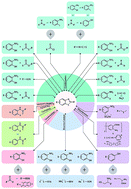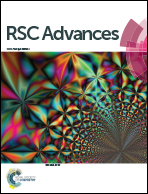Recent advances in the synthesis of 2-substituted benzothiazoles: a review
Abstract
Benzothiazole can serve as unique and versatile scaffolds, especially in synthetic and pharmaceutical chemistry because of their potent and significant pharmacological activities. This important class of derivatives possess numerous pharmacological activities like antitumor, antimicrobial, anti-inflammatory, anticonvulsant, antidiabetic activities and so on. Many scientists have developed a wide range of methodologies for the synthesis of the 2-substituted benzothiazole nucleus and its derivatives using different types of catalysts to improve the selectivity, purity and yield of the products. Thus, the present review article focuses mainly on the different kind of reactions involved in synthesis of the 2-substituted benzothiazole nucleus and its derivatives.


 Please wait while we load your content...
Please wait while we load your content...